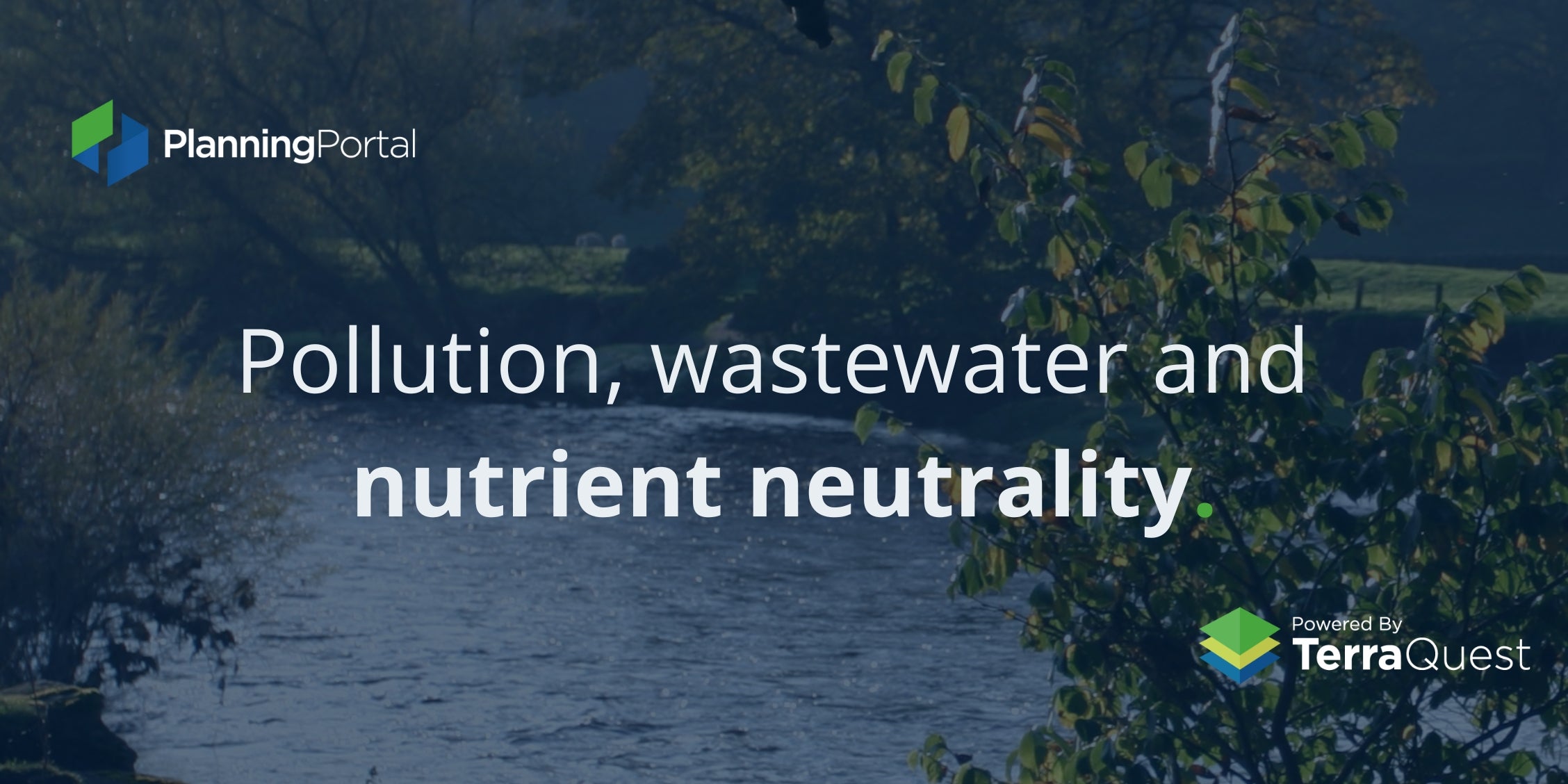Architectural Bulletins
Government proposals would shift water pollution burden back to wastewater plants, easing nutrient neutrality obligations for developers

On 24 May, Government published a list of wastewater treatment1 works across the country that, under new measures, would be legally obliged to update their infrastructure by 2030, or 2031 in some cases.
The announcement is the latest effort by legislators to tackle national water pollution, a topic that’s consistently made national headlines this year. It follows the introduction of nutrient neutrality regulations which, although only implemented in 2022, have already altered the course of thousands of development projects nationally.
A recent scandal in Brixham2, Devon, saw over 50 confirmed cases of cryptosporidium and thousands of homes urged to boil tap water before drinking it. Similarly, earlier this month it was revealed that ‘millions of litres’ of raw sewage was emptied illegally into Lake Windemere in February3. Dangerous levels of E-coli bacterium in the River Thames even came close to preventing the annual Oxford-Cambridge Boat Race at the end of March.
Those of us living in England are by now pretty familiar with these kind of stories. The river Avon, which is the foremost river running through Bristol, where Planning Portal are based, was found to be the third most contaminated in a study last year4. Many of us who live here have heard stories of river-related sickness, or personally know people who have been affected by it.
Rebecca Bowers, Town Planner at TerraQuest, told us:
“From what I've seen, wastewater plants are releasing sewage into all rivers, not just those used for drinking water, which nutrient neutrality doesn't cover. This means rivers deemed safe for swimming are now dangerous due to pollution. A recent study shows the UK's bathing water forecasts are outdated, failing to predict pollution from sewage overflows and agricultural run-off. The issue stems from outdated drainage systems, allowing overflow sewage into clean water systems. While climate change plays a role, the main problem is the lack of investment in cleaning polluted rivers and upgrading drainage infrastructure."
In January, a study published in the Guardian5 found that 83% of English rivers have evidence of high pollution. But as far back as 2022, a House of Commons committee report revealed that no river in England was free from chemical contamination.6
And in a recent report by the Royal Academy of Engineering7, engineers expressed concerns that waste in our rivers is putting the public at serious risk – a danger that will only increase without urgent action.
Unwanted nutrients are entering our waterways overwhelmingly as a result of sewage, and agricultural wastage.
So where do planning regulations come into this?
Back in 2018, a ruling in the European Court of Justice determined that the emptying of any additional nutrients into protected areas which were already in an ‘unfavourable’ condition, would be considered unlawful.
This ruling set an environmental precedent and in 2022, Natural England identified a number of UK rivers which were in an ‘unfavourable condition’ and warned that new housing developments would negatively contribute to an already bad situation.
They proposed a solution to government which would enable developers to mitigate or offset any additional nutrient load their proposals might add to waterways. This can be achieved by creating wetlands on the development site or by removing nutrients from vulnerable land or water elsewhere in the same catchment. The goal was to ensure that levels of nutrients such as nitrogen and phosphorus, which mainly come into our rivers from agricultural and sewage discharge, doesn’t increase.
These nutrient neutrality measures have come to represent government’s principal attempt to embed water protection into planning regulation over recent years - however it’s fair to say that since its conception, nutrient neutrality has proved controversial and in some cases difficult to implement.
In March 2023, a report published by the Home Builders Federation8 claimed that 150,000 houses have been held up from being granted permission due to failure to meet nutrient neutrality regulations.
In August, the Government tried to amend the Levelling Up and Regeneration Bill to scrap nutrient neutrality obligations for new housing developments. In an official news story announcing the move9, the government said, ‘Nutrients entering our rivers are a real problem, but the contribution made by new homes is very small.’
The amendment was voted down by the House of Lords, however.
Since then, government have made other attempts to enable mitigation, including their recent awarding of £9.6million to Norfolk council to allow them to invest in a river pollution reduction scheme, which involves paying farmers to stop keeping pigs.
And now, in an article released just two days after 2024’s general election was called, the Government published a list of wastewater treatment works which under their plans would be legally obligated to update their infrastructure by specified dates over the course of 2030 and 2031, requiring them to meet nitrogen and phosphorus pollution standards as set out in the Levelling Up and Regeneration Act.
This measure goes much further in attempting to stop pollution at the source. If they have the desired effect, the updates will help reduce neutrality obligations on developers in those areas, providing upgrades have been successfully made.
And where do Planning Portal come in?
We want to provide applicants with all the information they need to understand sustainability legislation and their obligations to the environment.
In addition, if you’re a local authority in an affected catchment area, you can now make it mandatory for applicants to provide nutrient neutrality information as part of their application. More information on this will follow.
- https://www.gov.uk/government/news/housebuilding-supported-as-government-tackles-water-pollution-at-source
- https://www.gov.uk/government/news/water-supply-issues-in-brixham-area
- https://www.bbc.co.uk/news/articles/cv266nqq48xo
- https://www.theguardian.com/environment/ng-interactive/2024/mar/27/englands-sewage-crisis-how-polluted-is-your-local-river-and-which-regions-are-worst-hit#:~:text=Just%20one%20river%20in%20the,third%20most%20polluted%20in%20England.
- https://www.theguardian.com/environment/2024/jan/30/english-rivers-pollution-sewage-agriculture-uk
- https://www.bbc.co.uk/news/science-environment-59955624#:~:text=Raw%20sewage%2C%20microplastics%20and%20slurry%20are%20coursing%20through,this%20%22chemical%20cocktail%22%2C%20the%20Environmental%20Audit%20Committee%20warns.
- https://raeng.org.uk/testing-the-waters
- https://www.hbf.co.uk/documents/12361/Nutrient_Neutrality_-_Solution_Finding_Report_-_HBF_Update_-__March_2023_-_FINAL.pdf
- https://www.gov.uk/government/news/100000-more-homes-to-be-built-via-reform-of-defective-eu-laws
- https://www.planningportal.co.uk/planning/sustainability-and-planning/nutrient-neutrality/what-is-nutrient-neutrality